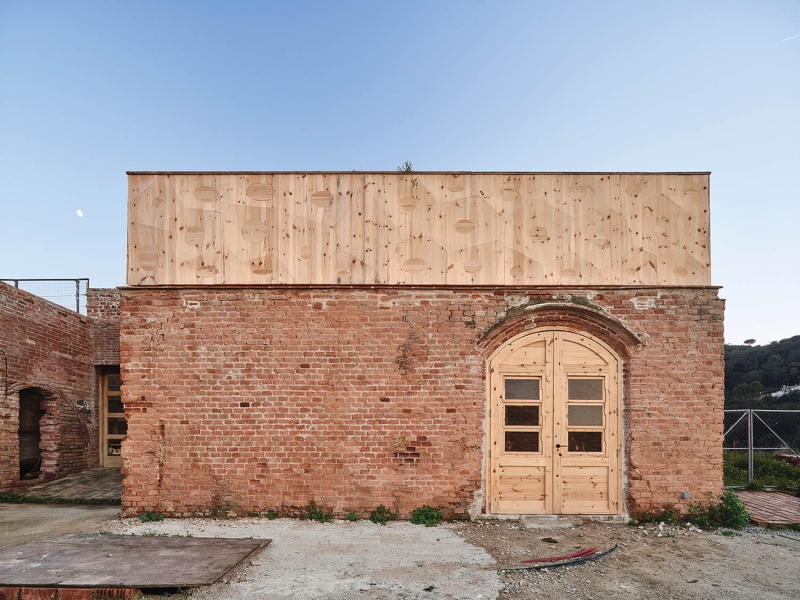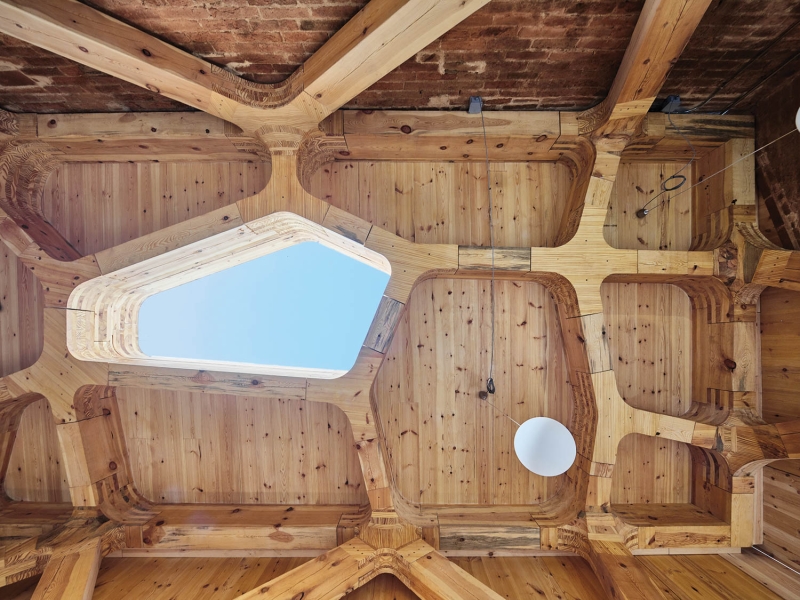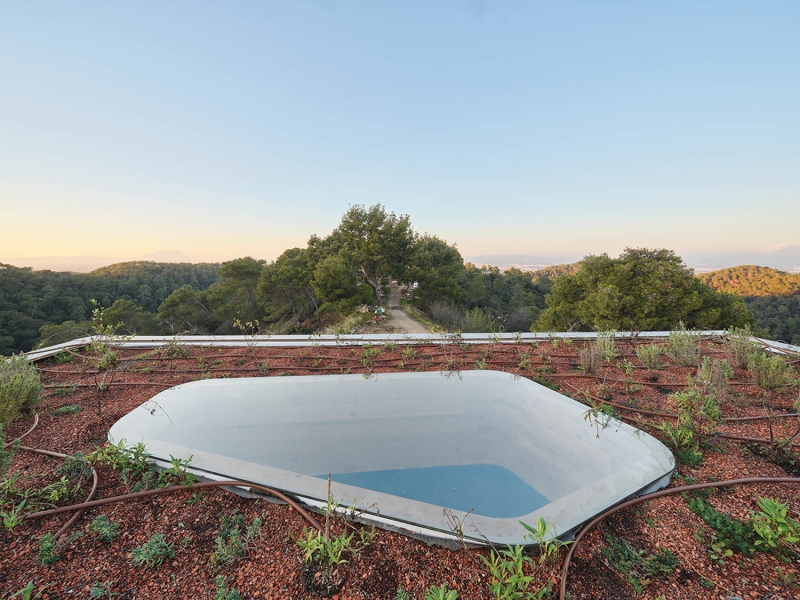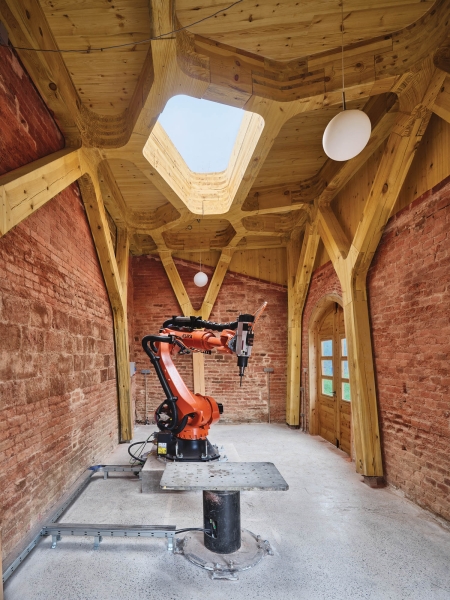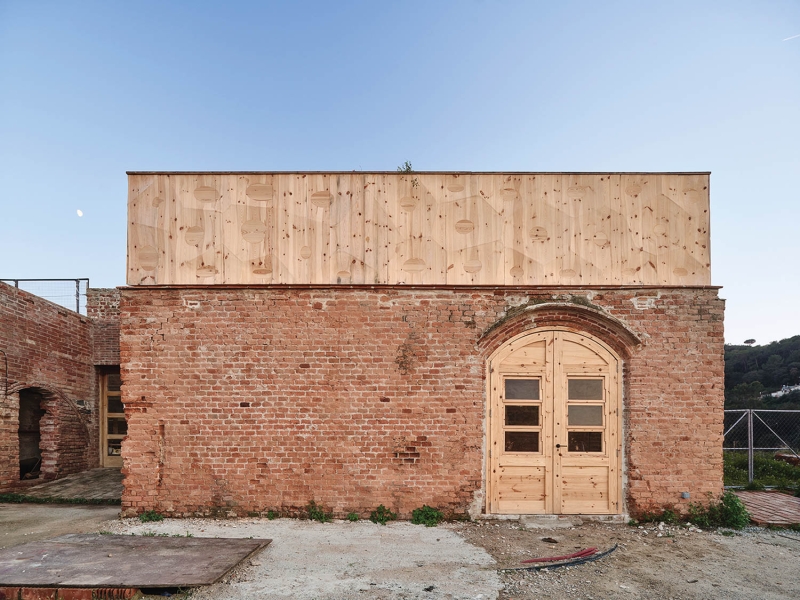Sounding like something out of science fiction, the Cathedral of Robotic Artisans (CORA) is basically a house built for a robot—a KUKA six-axis industrial milling robot to be exact—that’s intended to look like it was built by a robot. It occupies a 400-square-foot, 19th-century former stable on the Barcelona campus of Valldaura Labs, which is part of Spain’s Institute for Advanced Architecture of Catalonia, its aim “to lead the mission of imagining the future habitat of our society and building it in the present.” For their master’s in advanced architecture and bioscities, an international team of students led by architect and Valldaura director Vicente Guallart designed and built a functional lab for the KUKA over four months.
CORA’s name comes, in part, from its churchlike environs and support structure. The self-sustaining timber framework is enforced by seven branching columns representing tree trunks. This structure holds up the new roof of solid wood and joints of cross-laminated timber. To achieve that, traditional joinery techniques, mortise and tenon, for example, were combined with digital fabrication methods. Original brick walls were preserved and reinforced, and the timber used integrates with the surrounding landscape and architecture. The robot is, not surprisingly, very heavy, so the students excavated the existing floor, installed a concrete pedestal to support it, and created a terrazzo finish incorporating bricks found on the grounds, making CORA sustainable to boot.
